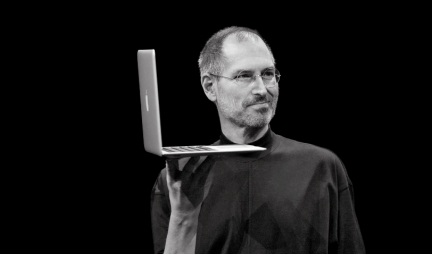
Like all companies,
Apple (AAPL) is not immune to bungling a new product, though its apologies haven’t always seemed heartfelt. After slashing the price of the first iPhone by $200 only a few months following its debut in 2007, Apple tried to placate enraged early adopters with a $100 rebate that they could only spend on Apple products. When the iPhone 4 was introduced with a flawed antenna design in 2010, it took 39 days of complaints for Steve Jobs to hold a press conference—and to offer dissatisfied users a free rubber case.
Considering that history, the reaction of new Chief Executive Officer Tim Cook to the outcry over the balky Maps application on the new iPhone 5 was positively penitent. Only one week after customers got their hands on the highly anticipated device, Cook issued a press release acknowledging the mapping service’s obvious flaws—such as turning much of the east side of Portland, Ore., into a nature park. He also took the unusual step of pointing users to alternatives from rivals such as
Microsoft (MSFT) and
Google (GOOG). “We are extremely sorry for the frustration this has caused our customers, and we are doing everything we can to make Maps better,” Cook said in a letter to customers posted on Sept. 28 on Apple’s website.

Since Jobs’s death one year ago, many Apple observers have predicted the company would suffer from the loss of his internal authority and intuition about product design and features. Apple is undoubtedly a different company under Tim Cook. It misses Jobs’s conspicuous creativity and entrepreneurial fervor, but it’s gaining in maturity, rationality, and, yes, value.
Over the past year, Cook has visited Apple’s Chinese manufacturing partner Foxconn (
2038:HK) to advocate for better pay and safer working conditions, reversed a decision to pull its products from an environmental certification program, and issued shareholders a dividend that Jobs stubbornly resisted for years. Less visibly, Cook has managed the inevitable internal strife as Apple’s executives tried to fill the leadership vacuum. And he’s got the operations side of Apple working better than ever, lining up the company’s suppliers to support the unprecedented scale of the iPhone 5 launch, which is on sale in nearly 30 countries and on track to be available in 100 by the end of 2012.
“The results speak for themselves,” says Avadis Tevanian, Apple’s former senior vice president of software engineering. “I’ve seen how the sausage factory works, and operationally it’s just phenomenal. Has there ever been a product anywhere that hit these kinds of volumes in so short a time?”
Apple stock is up 75 percent since Jobs’s death, driving its market capitalization past $600 billion and making it the most valuable company on the planet. Revenue, earnings, and margins have all expanded as well, and the company continues to hit its product release dates with the consistency of a metronome. Much about the company’s direction and even its products still reflects Jobs’s decisions and design preferences—the iPhone 5 was the last model to receive detailed input from Jobs, say two people familiar with its development. The company has yet to release any product Jobs didn’t personally bless. But Cook has executed Jobs’s plan even better than expected. “Tim has seemingly pulled off what many people doubted he could, which is to sustain and add to Apple’s incredible momentum,” says Michael Useem, director of the Center for Leadership and Change Management at the Wharton School.
Interviews with more than two dozen current and former Apple executives, employees, and partners reveal an internal mood largely characterized by a singular focus on proving to the world that Apple can still execute. There’s also more office politics and some concern that Jobs’s departure and the arrival of thousands of new employees will dilute the culture. Nevertheless, the company is happier and even somewhat more transparent than it was during Jobs’s tenure, these insiders say. There are fewer frantic calls at midnight, and there’s less implicit pressure on engineers to cut short or cancel vacations in the heat of product development cycles.
No one would say the post-Steve Jobs Apple is better off. But to a surprising degree, it’s doing fine without him.
On the day Jobs died, employees numbly walked outside to watch an American flag lowered to half-mast—and then returned to work. Partners who were in town to meet with the company were astonished to learn that appointments would take place as scheduled. “That’s what Steve would have wanted,” an Apple manager explained to Chuck Goldman, the founder of software developer Apperian, who was there that day. Two weeks later, Cook organized a memorial for employees on Apple’s Cupertino (Calif.) campus. Coldplay and Norah Jones—among Jobs’s favorite artists—performed before two-story-high banners portraying the founder. In a speech, Cook told employees that Jobs’s passing was “the saddest moment” in his life. He also said that Jobs had instructed the company not to be burdened worrying about how he would have handled particular decisions. That line has become almost a mantra inside Apple, according to several employees.
Cook was well-prepared for the succession. He had run manufacturing, logistics, customer support, and sales for years, and stepped in three times as interim CEO during Jobs’s medical leaves. Colleagues say the Alabama-bred Cook has a frank style and detailed knowledge of even minute operational details. Unlike Jobs, he prefers to withhold his opinion until the end of meetings so others can give him information to process. “His leadership style is quite different, both internally and externally. He’s much more open,” says Toni Sacconaghi, an analyst at
Sanford C. Bernstein (AB) in New York. “I think he believes he doesn’t have all the answers, so he’s willing to listen to other people. I’m not so sure that was the case with Steve.”
After Jobs died, observers wondered whether Cook could retain his accomplished management team—most of whom are fabulously wealthy and likely exhausted from years of tireless work. Cook has managed to keep everyone, at a price. Last November, he handed out an additional round of stock options, now worth about $100 million, to his senior team. Cook never professed to be a genius at envisioning products or crafting marketing campaigns, so he’s leaned heavily on longtime colleagues such as Scott Forstall, senior vice president of iOS Software; Jony Ive, senior vice president of industrial design; and Phil Schiller, senior vice president of worldwide product marketing. Cook’s deference to his colleagues was on display at the iPhone 5 launch. Apple’s CEO spoke for only 11 minutes at the nearly two-hour event before ceding the stage to a succession of his lieutenants.
 Getty Images(2); Bloomberg(1)
Getty Images(2); Bloomberg(1)
Earlier this summer, Cook did lose one key member of his team—and then nearly witnessed an insurrection in one of Apple’s most prominent divisions. On June 28, Apple announced the retirement of Bob Mansfield, the senior vice president for hardware engineering, who for more than a decade oversaw the remarkable expansion of the Macintosh line before taking on the iPhone and iPad as well. According to three people familiar with the sequence of events, several senior engineers on Mansfield’s team vociferously complained to Cook about reporting to his replacement, Dan Riccio, who they felt was unprepared for the magnitude of the role. In response, Cook approached Mansfield and offered him an exorbitant package of cash and stock worth around $2 million a month to stay on at Apple as an adviser and help manage the hardware engineering team.
On Aug. 27 the company took the rare step of announcing that Mansfield would stay at Apple. Jobs had hired and fired several outside managers, including Mark Papermaster, an operations executive from
IBM (IBM) who later went to
Cisco (CSCO). But this kind of public reversal was new to Apple. “Because of its size and a few key personalities, there’s more organizational infighting than is healthy,” says Brett Halle, a 21-year Apple veteran who left earlier this year. “It needs to be brought into check.”
Outside the company, the embarrassment over the iPhone 5 map app has prompted the obvious question: Would it have happened under Steve? It’s possible that Jobs would have nixed the app before launch, but not certain. Siri, the iPhone’s maligned voice assistant, was introduced under Jobs, though it was branded beta. Apple insiders say Jobs himself initiated the mapping project, putting mobile software chief Forstall in charge. He installed a secret team on the third floor of Building 2 on Apple’s campus to replace Google Maps on the iPhone. At the time of his death, Jobs had come to loathe Google, which he felt was copying features of the iPhone while withholding a key feature of Google Maps that allows smartphones to dictate turn-by-turn directions aloud. Jobs also discussed pulling Google search from the iPhone, but figured that customers would reject that move, according to two former Apple executives.
Despite the overwhelmingly negative response to Maps, analysts acknowledge that the company was boxed in, because maps and navigation have become such an important source of customer data and potential revenue on mobile devices. “I don’t think Apple had any choice but to make a major break and say, ‘We are going to just start from the beginning,’” says Tim Bajarin, an analyst with Creative Strategies. “The best thing Apple could do was take the hit now.”
The more important question is whether Cook’s pragmatism will continue to serve Apple well over the long term. Under Jobs, much of Apple’s magic came from creating product categories before anyone else and then forcing industries to cede to Apple a significant cut of their sales. It did this with music, video games, publishing, and mobile phone service, but it’s not clear what new territory remains for Apple to conquer.
The most obvious target is television. A Jony Ive-designed HDTV, packing the functionality and elegance of the Apple TV set-top box, has the potential to allow couch potatoes to renounce crowded programming guides and ugly remote controls. Yet media, cable, and satellite companies are all doggedly refusing to let Apple remake their business. And Jobs, a blunderbuss negotiator, isn’t around to break the logjam.
As the company searches for its next game-changing product, Cook has explored other ways to keep Apple growing. He’s focused on expanding the company’s reach and influence into the supply chain of components that go into iPhones and iPads. Apple plans to spend $1 billion this year researching next-generation laser-cutting technologies that can create thinner, lighter devices, up from several hundred million dollars a few years ago. The company has also funneled its $117 billion bank balance into designing its own chips, which allows Apple to customize certain features and drive down variable costs. The new iPhone carries Apple’s newest custom-designed chip, the A6. It’s likely the iPad Mini, to be introduced later this month, will run on an Apple-designed processor as well.
Apple has also deliberated over moving away from
Intel (INTC) chips in the Macintosh, say two people familiar with these discussions. Such a shift would be difficult and isn’t imminent, but it would allow Apple to further distinguish its laptops and desktops from those of competitors that run Intel’s chips and Microsoft’s Windows software.
Cook’s challenges will multiply. He’ll have to keep Apple focused as its product lines inexorably expand. Jobs liked to say no to new product initiatives, and it’s not yet clear whether Cook possesses the same skilled editor’s pen. Cook will also have to placate employees who’ve benefited from the stock’s helium-boosted price and could feel tempted to leave. Many rank-and-file employees say they’re watching closely to see whether Cook has a more generous approach to compensation than Jobs, who felt the glory of working at Apple should factor into their pay.
As long as Apple is regularly setting records in market capitalization, such tensions may remain safely contained. If Apple suffers a setback—something of greater magnitude than the navigational follies of the iPhone 5—then Cook’s mettle will truly be tested. It’s been one year since Steve Jobs died, but in many ways, the Tim Cook era is only just getting started.
http://www.businessweek.com/articles/2012-10-03/mapping-a-path-out-of-steve-jobs-shadow#p3d.






 Passbook which was introduced in Apple Inc (NASDAQ:AAPL)’s iOS 6 and came pre-loaded with a few goodies. American Express was one of the first credit card companies to start supporting it and Starbucks soon followed (though support is currently limited to the US). And it’s not done yet; Passbook is continuing to expand to beyond just boarding passes. MacDonalds has added support for the app in France, American Airline, AirBnB and Eventbrite are also available and Kiip seems to be on its way too.
Passbook which was introduced in Apple Inc (NASDAQ:AAPL)’s iOS 6 and came pre-loaded with a few goodies. American Express was one of the first credit card companies to start supporting it and Starbucks soon followed (though support is currently limited to the US). And it’s not done yet; Passbook is continuing to expand to beyond just boarding passes. MacDonalds has added support for the app in France, American Airline, AirBnB and Eventbrite are also available and Kiip seems to be on its way too.




















 Onavo, app-building company claimed in a blog post that regardless of users’ dissatisfied remarks regarding the Cupertino’s Apple INc (AAPL) iOS 6 Maps offering, the app is in fact better for iPhone holders than opponent services like Google Maps.
Onavo, app-building company claimed in a blog post that regardless of users’ dissatisfied remarks regarding the Cupertino’s Apple INc (AAPL) iOS 6 Maps offering, the app is in fact better for iPhone holders than opponent services like Google Maps.

























